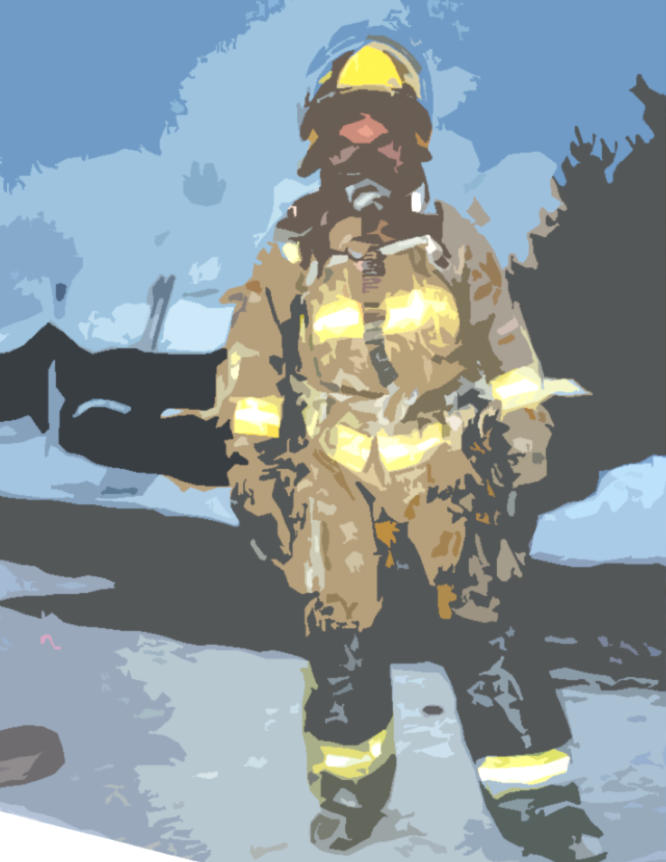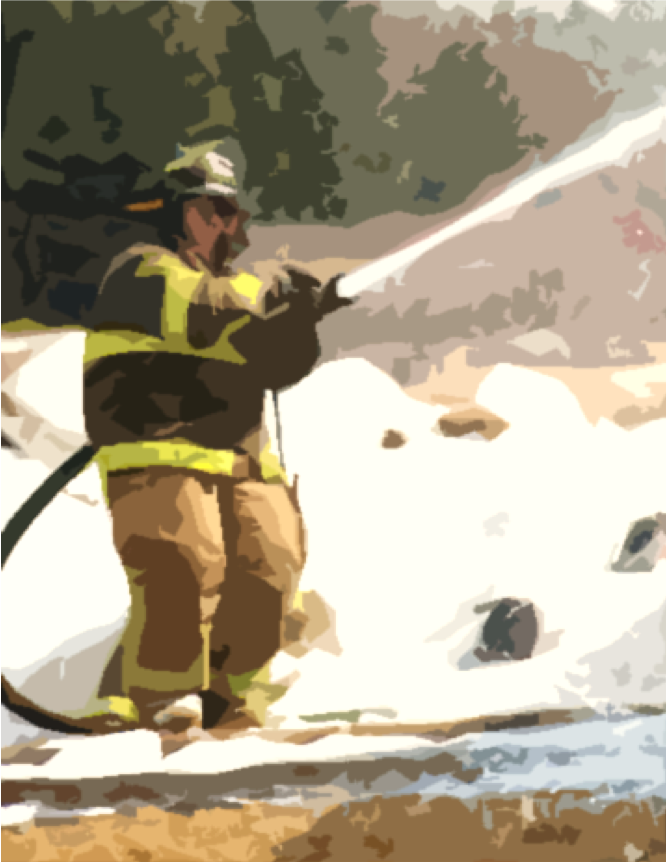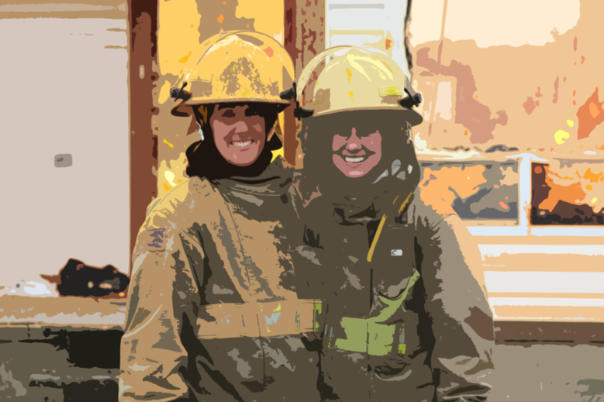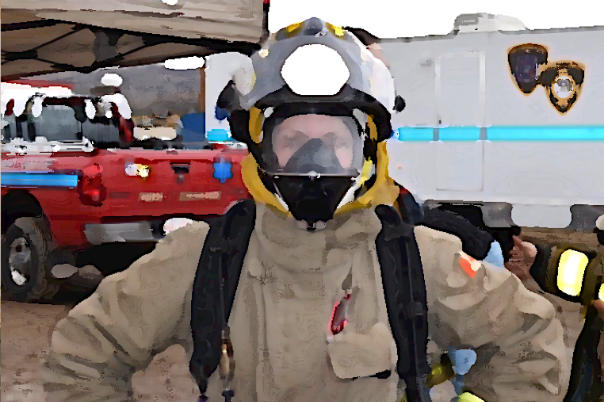Women Firefighters
Project Summary
Less than five percent of Canada’s firefighters are women. In general, only twenty percent of all firefighters hold a career position while the remaining eighty percent are volunteers. Research documenting the unique perspective of Canadian women firefighters is nearly absent. We know of a few cases that have received media coverage because women were bullied and took their case to the human rights’ court. In this project, we are studying and documenting the reality of Canadian women firefighters. Specifically, we want to examine: (1) How they navigate an environment that is predominantly occupied by men; (2) What structural enablers and barriers do they encounter in their daily experience (e.g., policies of fire service institutions); (3) What discrimination and/or harassment, and/or gendered cultural practices do they face in the firefighting environment; and (4) How do they cope, resist, and survive?
Project Description
Equality legislation implemented since the 1970s (e.g., Section 15 of the Canadian Charter of Rights and Freedoms, 1982) facilitated the influx of an increasing number of Canadian women into men-dominated traditional occupations (Hughes, 1995, 1990). However, this has not been the case in firefighting. In 2016, women made up only 4.4% (1,445 out of 32,875) of professional firefighters in Canada and only 4% (95 out of 2380) of fire chiefs and senior officers (Statistics Canada, 2017). Some researchers have argued that the demanding physical nature of firefighting explains why women are underrepresented (Flynn, 2000). However, findings from the US (Hulett et al., 2008; Wang & Kleiner, 2001; Yoder & Berendsen, 2001), UK (Ainsworth et al., 2014), Australia (Perrott, 2016), and France (Pfefferkorn, 2006), for example, suggest that factors such as on-the-job discrimination and sexual harassment also function to keep women out of firefighting. Yet, few studies have investigated the everyday experiences of women firefighters on the job, especially in the Canadian context. Further, most studies do not include women volunteer firefighters; indeed, the exact number of women volunteer firefighters in Canada is unknown.
Using P-SEC Methodology (Gouliquer & Poulin, 2005), we conducted interviews with women firefighters from across Canada. Findings have been presented at a number of conferences. As well as in the article entitled “Othering of Full-Time and Volunteer Women Firefighters in the Canadian Fire Services” (Gouliquer, et al., 2020) in the journal Qualitative Sociology Review.
Findings have been also published in French in a chapter entitled ‘Pompières : la passion du feu et le prix à payer’ in the book, ‘Enjeux humains et psychosociaux du travail,’ published by the Presses de l’Université du Québec.
We are still analysing the data and sharing the results. Findings will continue to be shared through this web site, as well as to researchers in the field, fire service institutions, and political governmental bodies in the forms of conference presentations, journal publications, press releases, and policy briefs.
References
Ainsworth, S., Batty, A., & Burchielli, R. (2014). Women constructing masculinity in voluntary firefighting. Gender, Work and Organization, 21(1), 37–56. https://doi.org/10.1111/gwao.12010
Canadian Charter of Rights and Freedoms, s 15, Part I of the Constitution Act, 1982, being Schedule B to the Canada Act 1982 (UK), 1982, c 11. https://www.justice.gc.ca/eng/csj-sjc/rfc-dlc/ccrf-ccdl/check/art15.html
Flynn, K. (2000, February 3). Despite recruiting, few women do well in firefighter tests, The New York Times. https://www.nytimes.com/2000/02/03/nyregion/despite-recruiting-few-women-do-well-in-firefighter-tests.html
Gouliquer, L., & Poulin, C. (2005). For better and for worse: Psychological demands and structural impacts of the military on gay servicewomen and their partners in long-term relationships. In D. Pawluch, B. Shaffir, & C. Miall (Eds), Doing ethnography: researching everyday life. Toronto: Canadian Scholars’ Press Inc.
Gouliquer, L., Poulin, C., & McWilliams, J. (2020). Othering of full-time and volunteer women firefighters in the Canadian Fire Services. Qualitative Sociology Review, 16(3), 48–69. https://doi.org/10.18778/1733-8077.16.3.04
Hughes, K. D. (1990). Trading places: Men and women in non-traditional occupations, 1971- 86, Perspectives on Labour and Income, 2(2), 58-68. https://www150.statcan.gc.ca/n1/en/pub/75-001-x/1990002/article/94-eng.pdf?st=Yeqw89Zc
Hughes, K. D. (1995). Women in non-traditional occupations. Perspectives on Labour and Income, 7(3), 14-19. https://www150.statcan.gc.ca/n1/en/pub/75-001-x/1995003/article/1637-eng.pdf?st=P-MIkW3p
Hulett, D., Bendick, M., Thomas, S., & Moccio, F. (2008). Enhancing women’s inclusion in firefighting in the USA. International Journal of Diversity in Organizations, Communities & Nations, 8(2), 189–207. https://doi.org/10.18848/1447-9532/CGP/v08i02/39562
Perrott, T. (2016). Beyond ‘token’ firefighters: Exploring women’s experiences of gender and identity at work. Sociological Research Online, 21(1), 51–64. https://doi.org/10.5153/sro.3832
Pfefferkorn, R. (2006). Des femmes chez les sapeurs-pompiers. Cahiers du Genre, 1(1), 203-230. https://doi.org/10.3917/cdge.040.0203
Statistics Canada (2017). Occupation – National Occupational Classification (NOC) 2016 (693A), Highest Certificate, Diploma or Degree (15), Labour Force Status (3), Age (13A) and Sex (3) for the Labour Force Aged 15 Years and Over in Private Households of Canada, Provinces and Territories, Census Metropolitan Areas and Census Agglomerations, 2016 Census – 25% Sample Data. Statistics Canada Catalogue no. 98-400-X2016295. https://www12.statcan.gc.ca/census-recensement/2016/dp-pd/dt-td/Rp-eng.cfm?TABID=2&Lang=E&APATH=3&DETAIL=0&DIM=0&FL=A&FREE=0&GC=0&GID=1341679&GK=0&GRP=1&PID=110696&PRID=10&PTYPE=109445&S=0&SHOWALL=0&SUB=0&Temporal=2017&THEME=124&VID=0&VNAMEE=&VNAMEF=&D1=0&D2=0&D3=0&D4=0&D5=0&D6=0
Wang, S, & Kleiner, B. H. (2001). Sex discrimination in firefighting organisations. The International Journal of Sociology and Social Policy, 21(8-10), 175-183. https://doi.org/10.1108/01443330110789934
Yoder, J. D. & Berendsen, L. L. (2001). ‘Outsider within’ the firehouse: African American and White women firefighters. Psychology of Women Quarterly, 25(1), 27-36. https://doi.org/10.1111%2F1471-6402.00004
Publications
Gouliquer, L., Poulin, C., & McWilliams, J. (2020). Othering of full-time and volunteer women firefighters in the Canadian Fire Services. Qualitative Sociology Review, 16(3), 48–69. https://doi.org/10.18778/1733-8077.16.3.04
Poulin, C., Gouliquer, L., & Moore, A. (2018). Pompières : la passion du feu et le prix à payer. In J. Douesnard (Ed.), Enjeux humains et psychosociaux du travail (pp. 209-247). Québec, Qc : Les Presses de l’Université du Québec (PUQ).
Presentations
Moore, A., Gouliquer, L., & Poulin, C. (2021, June 21-23). Gendered politics of cancer in the Canadian fire services. [Presentation]. Qualitative Analysis Conference. Hosted online by Brescia University College, London, ON. https://www.qualitatives.ca
Moore, A., Poulin, C., & Gouliquer, L. (2021, June 7-25). Canadian women firefighters’ invisible and unexamined cancer risks. [Poster presentation]. Canadian Psychological Association’s 2021 Virtual Series. Online. https://convention.cpa.ca/
McWilliams, J., Sharkey, M., Poulin, C., & Gouliquer, L. (2019). Women firefighters in Canada: The issue of ill-fitting personal protective equipment. Symposium: The marginalisation of women across time, land, and institutions. 80th annual convention of the Canadian Psychological Association, Halifax, Canada, May 31-June 2.
Sharkey, M., McWilliams, J., Gouliquer, L., & Poulin, C. (2019). “That’s the way they are made”: Canadian women firefighters and the issue of ill-fitting personal protective equipment. The 36th Annual Qualitative Analysis Conference: The Transdisciplinary Efficacy of Qualitative Methods: Studying Everyday Life, the Empirical Tradition Continues. Fredericton, New Brunswick, May 9-11.
McWilliams, J., Poulin, C., & Gouliquer, L. (2018). Feeling like the outsider: Othering of women firefighters in Canada. The 35th Annual Qualitative Analysis Conference: Creating, Negotiating, and Transcending Social Boundaries in Everyday Life. Fredericton, New Brunswick (May 16-18).
McWilliams, J., Poulin, C., & Gouliquer, L. (2018). Health implications of othering: A study of women firefighters in Canada. The Faculty of Nursing’s 23rd Annual Research Day, University of New Brunswick, Fredericton, Canada (May 11).
McWilliams, J., Poulin, C., & Gouliquer, L. (2017). Othering of Volunteer and Full-time Female Firefighters in Canada. Symposium: New Rules, Same Results: Institutions Shaping the Everyday Realities of the Marginalised. 78th annual convention of the Canadian Psychological Association, Toronto, Canada, June 8-10.
Poulin, C., Gouliquer, L., McWilliams, J., Young, P., Tucker, W., & Moore, A. (2016). Female firefighters in leadership roles: “Where is the man in charge?” Poster-presentation at the UNB Research Showcase, Fredericton, Canada, (30 September).
Lesmana, M., Poulin, C., Gouliquer, L., Hamilton, H. (2016). Female firefighters in leadership roles: “There’s no line up for the washrooms!” Poster-presentation at the 77th annual convention of the Canadian Psychological Association, Victoria, Canada, June 9 – 11.
Poulin, C., & Gouliquer, L. (2015). Aging, Women, and Firefighting: Just like oil and water! Aging & Society: An Interdisciplinary Conference: Fifth Interdisciplinary Conference. Washington, DC (5 – 6 November).
Étude pan-canadienne: L’expérience au quotidien chez les pompières. Presentation given with Dr. L. Gouliquer at the « Service de sécurité incendie de Montréal” (SIM), 10 August, 2015.
Lesmana, M., Poulin, C., & Gouliquer, L., (2015). The experience of female firefighters: Confronting Ageism and Sexism. Poster-presentation at the 76th annual convention of the Canadian Psychological Association, Ottawa, Canada, June 3-6.


Purpose and Importance
of this Study
To examine the influence of social relations, culture, and policies of Canadian fire services on the daily lives of women firefighters.
To document barriers and difficulties that women firefighters encounter because of the way the fire stations are set up and function, which are linked to the culture of firefighting.
To investigate their cognitive and behavioural coping mechanisms and resilience.
To shed light on differences and similarities between the experience of paid and unpaid women firefighters.
To examine from a feminist lens the institutional practices, policies, and remedial strategies to improve gender relations.
To make policy recommendations based on findings.
Quotes
Note: All names and identifying information has been changed to protect the individuals.
“Like we now know that females can be just as good doctors as male doctors, just as good astronauts as male astronauts, we have to learn that female firefighters can be just as good firefighters as male firefighters.” (Allie)
“I think the stereotype is if you’re gonna do a man’s job then you’re like a man. But you don’t have to be like a man to do a man’s job. It’s only a man’s job because it’s been a man’s job throughout history. But it’s not necessarily only for men!” (Bree)
“I would tell them to follow their dreams. And not to allow the opinions of others to stand in their way. It’s not about anybody else’s beliefs, it’s about your beliefs.” (Diane)
“It’s no different than any other job: You have to train, and you have to be educated, and you have to work hard.” (Frances)
“Don’t treat us [women] like we’re special, or make a big deal, we’re here to do our job, acknowledge that!” (Gabrielle)
“Female firefighters don’t underestimate them. Even if they’re small or big or whatever country they come from, they’re strong.” (Georgia)
“We’re all there for the same reason [to do firefighting work].” (Joanne)
“That we got hired with the same standards as the men. We do not have different standards. We can do the job, and that we are a benefit to the public, to be in the fire service.” (Lenore)
“If we make it into the job, it’s because we can do it physically and not because we’re just there for show. . . We passed all the tests, there was no advantage. It was because we got there the same way everyone else [i.e., men] got there.” (Odille)
“We are not the albino unicorn. There’s lots of us out there. . . It’s okay for their daughters and sisters and wives to become firefighters.” (Olive)
“We’re still females but we do the job. And all you can do is try. Don’t say you can’t do it. Try and you’d be surprised what you can do.” (Renee)
“We work just as hard as men. We’re just as capable of doing the job. There’s really no difference other than our genders.” (Unity)
“People have to realize that women, especially in male-dominated environments, are there because they love doing what they do, not because they’re trying to compete with the males.” (Xaviera)
Support for this Study





Share this Study
Related Links
The Fire Within: The Secret Battles of Female Firefighters
CBC The Fifth Estate
Theirs is a reputation forged in fire -- built on bravery, dedication and danger. But privately, there’s a dark side; a burning secret inside so many fire halls across the country. Female firefighters who spoke to the fifth estate say they are being bullied and harassed on the job.


